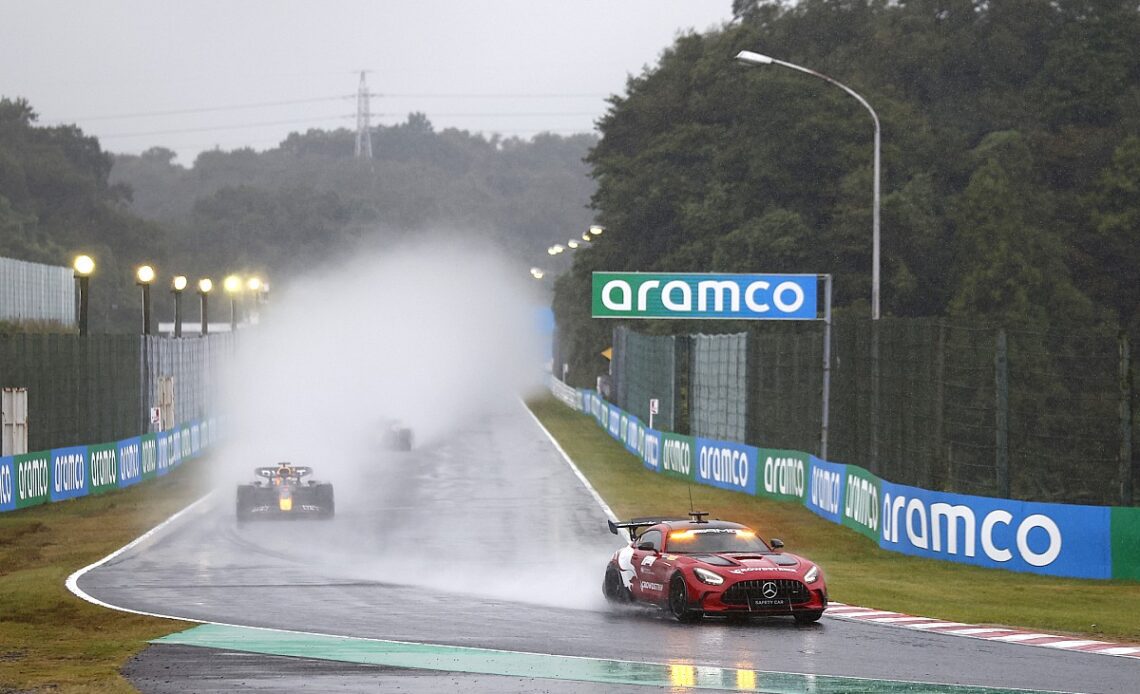After the washouts that led to both the Singapore and Japanese Grands Prix being delayed because of downpours, F1 drivers are convinced that a better solution can be found to help get track action resumed as soon as it is safe enough.
They believe that just using F1’s safety car to judge water levels on track is far from ideal, as its performance and the amount of spray it throws up is not comparable to grand prix machinery.
This can lead to both unnecessary delays in getting races resumed, but also portray a wrong impression to fans and television commentators that conditions appear better than they really are.
Following discussions between members of the Grand Prix Drivers’ Association (GPDA) in the wake of the events in Singapore and Japan, an idea has emerged for a new ‘information laps’ procedure to be introduced.
This would be to allow F1 cars to run for a few laps – either alone or behind a safety car – at set periods of time during rain delays.
Race control could then get direct feedback from drivers during and after these laps to better judge whether or not it is safe for the race to go ahead.
GPDA chairman Alex Wurz believes that these ‘information laps’ would be a hugely valuable tool in giving the FIA better information on track conditions, and making it clearer to the viewing public about whether or not it is too dangerous to resume action.
“The race director should have the option for what I call information laps,” Wurz told Motorsport.com in an exclusive interview.
“So he could say, if the teams agreed to this procedure, that in 10-minutes’ time we will send the cars around – like it’s a going to the grid lap.
“On this lap, the drivers would all see what the conditions were like. We could have 20 opinions of the 20 drivers who put their lives at risk. And then it’s a much more informed decision for the FIA from the drivers.”
Wurz reckons that these extra laps would be hugely beneficial to trackside officials too, as it would help them know if visibility was good enough for them to operate safely.
“It’s also better for the marshals because they will know if they can see the next marshal post,” he said.
“If you can’t see the next marshal post, you shouldn’t really drive because you wouldn’t see an accident in this white cloud of mist.
“So with these information laps, the marshals can also inform us of conditions. The race director will get a better-informed picture and all the millions of viewers around the…
Click Here to Read the Full Original Article at Motorsport.com – Formula 1 – Stories…

